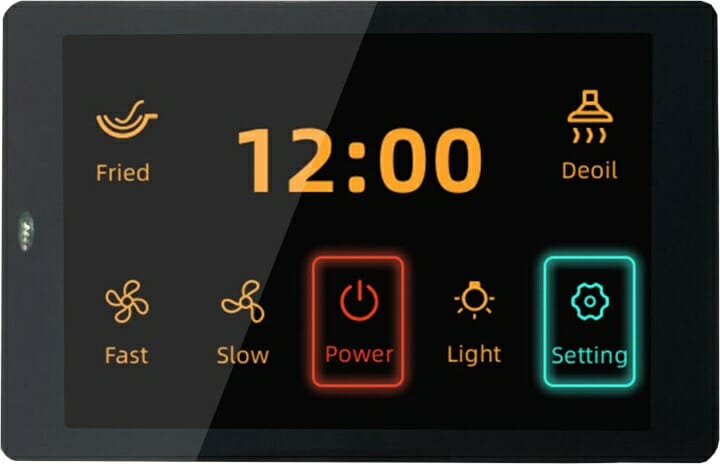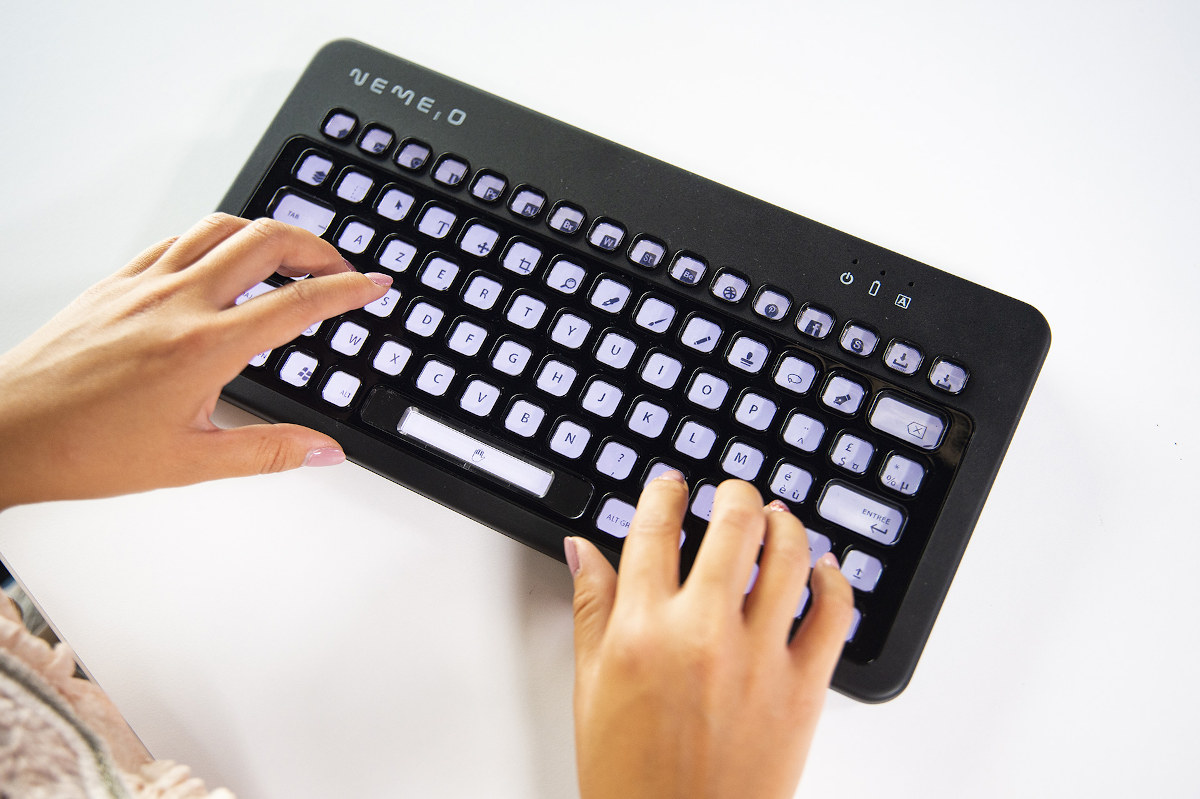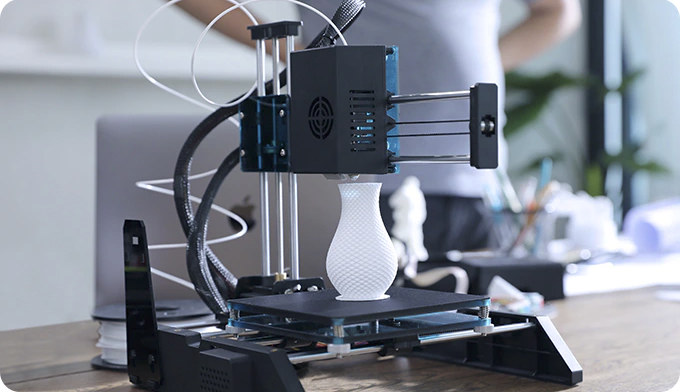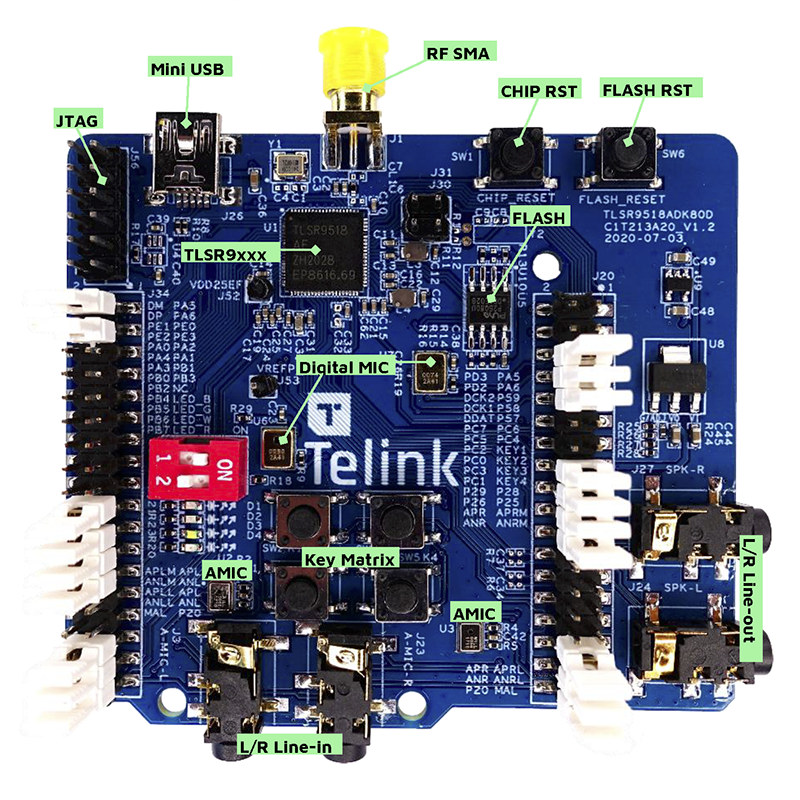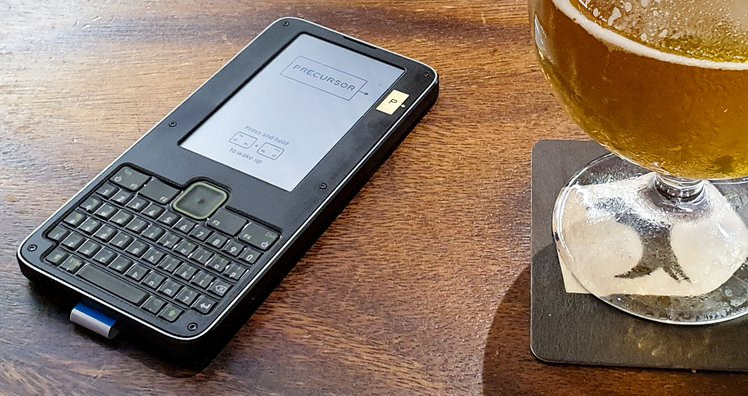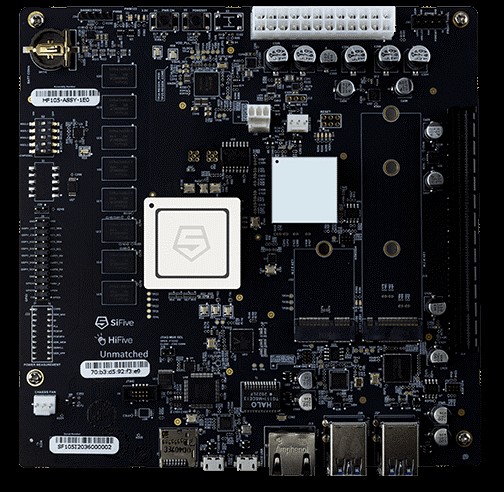We’ve previously covered a couple of ESP8266 WiFi boards to control LED strips from ANAVI Technology ESP8266 powered ANAVI Miracle Controller and ANAVI Light Controller Starter Kit, but Ben Henke has also made similar ESP8266 LED controllers with PixelBlaze boards. The latest iteration – PixelBlaze v3 – is based on ESP32 WiSoC and comes in two variants: PixelBlaze v3 Standard with headers and PixelBlaze V3 Pico in a much tinier form factor (33.3 x 11mm) with both models supporting live-coding via a web interface. PixelBlaze v3 specifications: Wireless SiP or module Standard – ESP32-WROOM-32 module with Espressif ESP32 dual-core processor @ 240 MHz with 4MB flash Pico – ESP32-PICO-D4 system-in-package with Espressif ESP32 dual-core processor @ 240 MHz with 4MB flash 4-pin header with VCC, GND, DATA, CLK for LED matrix or strip Compatible with APA102, SK9822, DotStar, WS2811, WS2812 (up to 2,500 LEDs), WS2813, WS2815, NeoPixel, and WS2801 actively […]
WT32-SC01 is a thin 3.5-inch ESP32 color touchscreen display
Looking for an ESP32 board with a color touchscreen display? There is plenty of choices here, including Espressif Systems own ESP32-S2-Kaluga-1 multimedia devkit with a 3.2-inch display or M5Stack Core2 with a 2-inch display. But if you’d like a thinner and larger display, Tag Wireless WT32-SC01 is an ESP32-powered 3.5-inch color display with a 2-point capacitive touchscreen designed to be integrated into your own project or product. WT32-SC01 WiFi display specifications: Wireless Module – ESP32-WROVER-B module based on ESP32-D0WD dual-core processor up to 240 Mhz with 4MB SPI flash, 8MB PSRAM, 2.4GHz WiFi 802.11 b/g/n up to 150 Mbps, and Bluetooth 4.2 LE Display – 3.5-inch 480×320 display (SPI) with 2-pin capacitive touchscreen (I2C) Expansion – 2x 40-pin I/O pads with GPIO, I2C, VN/VP, I2S, UART, 5V, 3.3V, GND Misc – Reset button (6), power and UART LEDs Power Supply – 5V/1A via USB type-C port for display only, or […]
Nemeio is a true international keyboard thanks to ePaper keys (Crowdfunding)
I remember in my younger years, I had an international student meeting at university, and when students went to the computer room, all I could hear were complaints about that stupid AZERTY keyboard. Later on, I also did some English to French translation work with a Thai/English keyboard, and it was a pain for some of the characters. So would it be nice if there was a keyboard that could easily be reconfigured to match whatever layout you’d like to work with? That keyboard now exists. Meet Nemeio, a true international keyboard, that can be customized thanks to ePaper keys. Nemeio comes with 81 mechanical transparent keys, backlight (since ePaper display can’t be seen in the dark), Bluetooth connectivity, as well as a USB-C for charging or connection to your PC via USB instead of Bluetooth, a USB Type-A port to charge other devices, a power on/off button, and two […]
Selpic Star-A is a low-cost, compact 3D printer and laser engraver (Crowfunding)
$99 3D printers are announced nearly every year with varying quality, and Selpic, which made the Selpic S1+ handheld 2D printer, joined the fray with Selpic Star-A multi-function 3D printer that was offered as for as little as $99 as an early bird reward on Kickstarter. The 3D printer is still up on Kickstarter with pledges starting at $129 and support for laser engraving for $39 extra, meaning it offers many of the same features as SC-10 SHARK multi-function 3D printer but at a lower price point, a much smaller form factor also meaning a smaller build volume, and slower printing speeds. Selpic Star-A 3D printer specifications: Build volume – 12 x 12 x 12 cm Display – Optional 2.4-inch touch screen Printing materials – PLA, TPU, PETG, ABS Print resolution – >= 0.1 mm Layer thickness – 0.05 to 0.3 mm Printing speed – 30 to 60 mm/s Nozzle […]
CarDongle replaces Android Auto with an Android 9.0 USB computer (Crowdfunding)
[Update Feb 16, 2021: CarDongle used to be called CarDroid, but the company had to change the product name. The rest of the post still uses CarDroid] Many cars now sell with Android Auto support but infotainment systems compatible with Google’s mobile app may have limitations and that’s why we have started to see third-party solutions such as AAWireless adapter to enable wireless Android Auto on more cars. Since Android Auto compatible hardware can’t be easily or cheaply upgraded, CarDroid Innovations has introduced CarDroid USB computer that works with Android Auto but instead runs Android 9.0 on a quad or octa-core Cortex-A53 processor clocked at up to 2.0 GHz with improved performance and access to more apps. CarDroid specifications: SoC – Unnamed quad or octa-core Cortex-A53 processor @ 2.0 GHz (Likely Amlogic S912 octa-core processor, advertised at 2.0 GHz, but whose real max frequency is 1.5 GHz, and maybe Amlogic […]
Telink TLSR9 Wireless Audio & IoT RISC-V SoC integrates RISC-V DSP/SIMD P-extension
At the end of last month, there was a lot of buzz about Bouffalo BL602, one of the first RISC-V SoC with built-in wireless connectivity, namely WiFi 4 and Bluetooth 5.0 LE. We should expect more and more of those types of solutions, and Telink & Andes jointly introduced TLSR9-series of wireless audio chips for hearables, wearables, and other high-performance IoT applications. The chips are powered by an Andes D25F RISC-V 5-stage core that happens to be the first core to integrate RISC-V DSP/SIMD P-extension and offer Bluetooth 5.2, Zigbee 3.0, HomeKit, 6LoWPAN, Thread, and/or 2.4 GHz proprietary protocol. The press release focuses on the Andes core, but an article in Chinese allows use to find more about Telink TLSR9 family’s key features: CPU – Andes D25F 32-bit RISC-V 5-stage core @ up to 96 MHz (2.59 DMIPS/MHz and 3.54 CoreMark/MHz) with RISC-V DSP/SIMD P-extension Optional NNU – AI engine […]
Precursor is a mobile, open hardware, dual FPGA development kit (Crowdfunding)
Sutajio Ko-usagi PTE LTD has launched some interesting hardware on Crowd Supply over the years include Novena open-source hardware Arm laptop, and Fomu FPGA USB board. The company is now back with another project: Precursor, a mobile, open-source hardware devkit powered by not one, but two FPGA with Xilinx Spartan 7-Series FPGA, plus a super-low-power Lattice iCE40 UP5K FPGA for deep-sleep system management. The device also comes with a display, battery, and keyboard that make it looks like older Palm or Blackberry phones. Precursor FPGA devkit specifications: FPGA Xilinx XC7S50 primary System on Chip (SoC) FPGA with -L1 speed grade for longer battery life; tested with 100 MHz VexRISC-V, RV32IMAC + MMU, 4k L1 I/D cache Lattice Semi iCE40UP5K secondary Embedded Controller (EC) FPGA for power, standby, and charging functions; tested with 18 MHz VexRISC-V, RV32I, no cache System Memory – 16MB external SRAM Storage – 128MB flash Display -536 […]
SiFive launches HiFive Unmatched mini-ITX motherboard for RISC-V PC’s
When it comes to RISC-V based SoC, SiFive has always set a benchmark in the RISC-V ecosystem. On 29th October 2020, SiFive confirmed the first-ever RISC-V PC. After an increased demand for AI-focused RISC-V microarchitecture, targeting all applications from artificial intelligence, the internet of things, high-performance computing, and now even desktop PCs. SiFive Freedom U740 powered HiFive Unmatched mini-ITX motherboard comes with a complete development environment which allows developers to create RISC-V based applications from bare-metal to Linux-based systems. “HiFive Unmatched ushers in a new era of RISC-V Linux development with a platform in a PC form factor. Powered by the SiFive Freedom U740, a high-performance multi-core, 64-bit dual-issue, superscalar RISC-V processor.”, SiFive says. It is the world’s fastest native RISC-V development platform. SiFive HiFive Unmatched Board At the heart of the SiFive board is a SiFive FU740 processor coupled with 8 GB DDR4 memory and 32 MB SPI Flash. It […]


